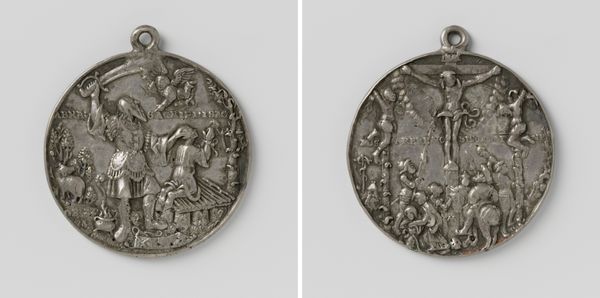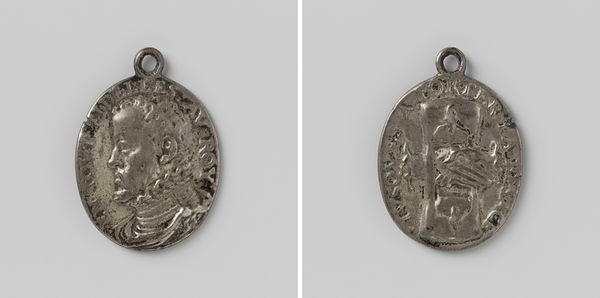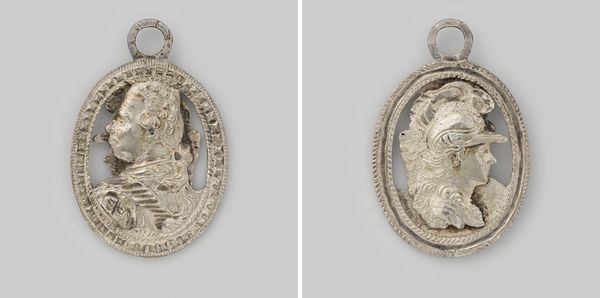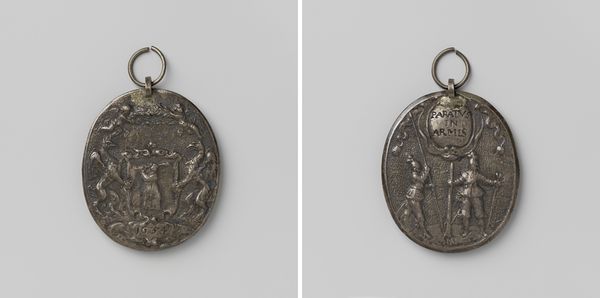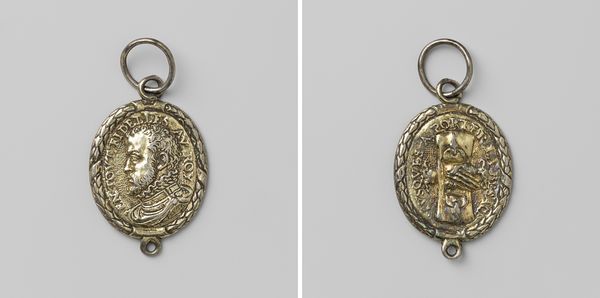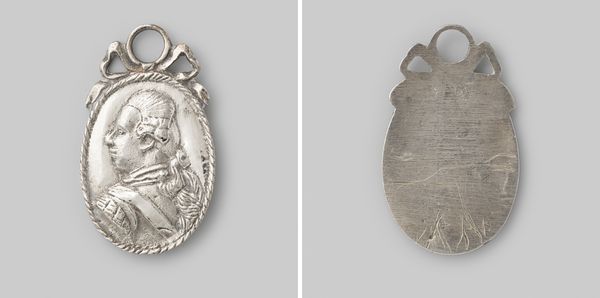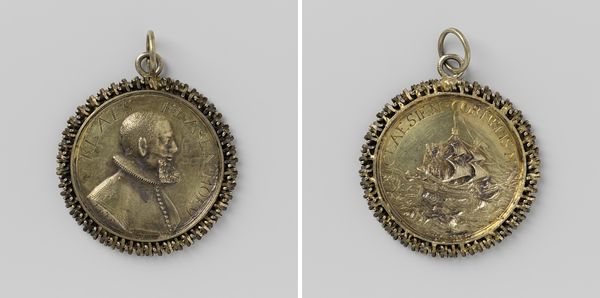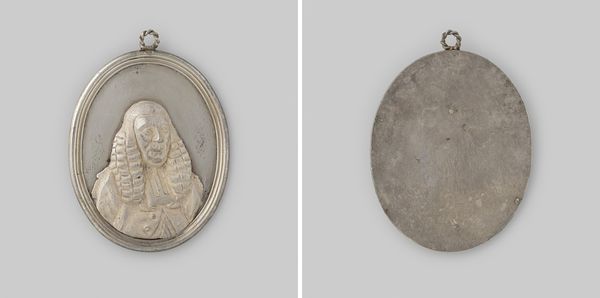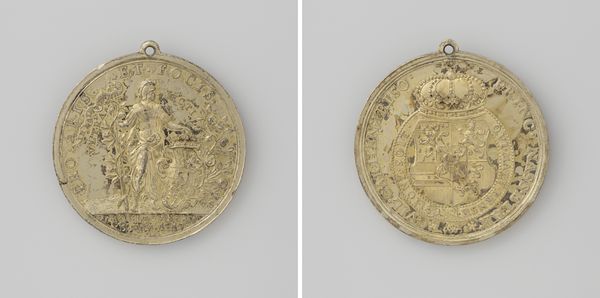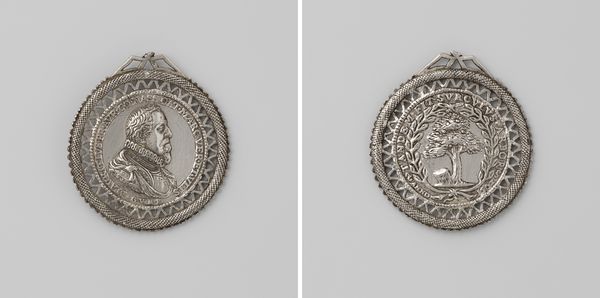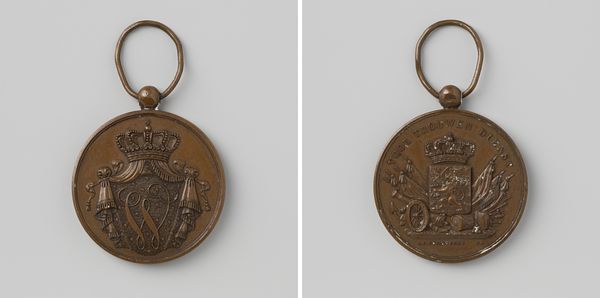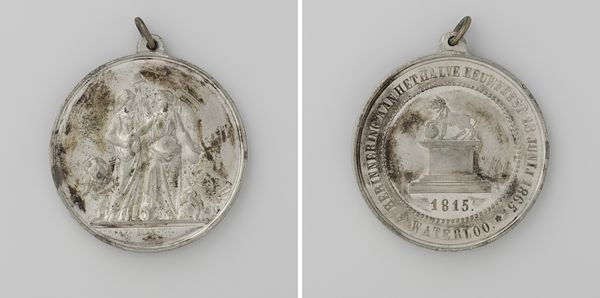
silver, metal, relief, sculpture
#
portrait
#
silver
#
metal
#
relief
#
11_renaissance
#
sculpture
#
history-painting
#
northern-renaissance
Dimensions: length 3.4 cm, length 3 cm, width 2.6 cm, weight 12.26 gr
Copyright: Rijks Museum: Open Domain
Curator: Look at this silver relief sculpture by Jacques Jonghelinck, dating back to 1566. It's called "Watergeuzen." Editor: Intricate, but also feels rather… constrained, doesn't it? The figures and inscription seem pressed, almost claustrophobic. I'm immediately drawn to the texture; you can see the maker’s touch so clearly, the tooling of the silver itself. Curator: Indeed, the choice of silver as a material is intriguing. Consider its symbolic weight: silver has always been associated with purity, clarity, and memory. Now, focusing on its two sides: on one, we see a portrait—likely a political figure, rendered with serious detail. The other depicts two men clasping hands, both equipped as soldiers or mariners. What feelings does the pair provoke? Editor: This use of relief really amplifies its physical presence, its weight. Knowing its size must've influenced the creation— how it might be carried, exchanged, or even hidden, during a tumultuous period in Dutch history. Did the original owners touch and fondle it during prayers and meditations, and feel comforted? Curator: Ah, a fantastic interpretation. The imagery is layered with references to allegiance. These figures can easily be identified as the "sea beggars"—Dutch rebels during the uprising against Spanish rule. They represent loyalty to a cause, resistance, and solidarity during times of brutal conflicts. Note also the inscription around their image. Editor: That's it. I get it! It’s a piece designed to be propaganda on a small scale. It serves not only as art but as an object of defiant national pride. This medallion exemplifies that transition point. How innovative to mold something normally of opulent jewelry in connection with acts of dissent? Curator: Precisely! The symbolism resonates deeply with the historical moment. But what do you make of its role today? Editor: Its ability to transport us to that precise point, to let us nearly touch and feel history –that's where its magic truly lies. It becomes an artifact to meditate on production, protest, labor, and its representation across material culture. Curator: Beautifully said. I find myself drawn back to those faces, wondering what they have witnessed, the conversations they might inspire centuries later. Thank you for that stimulating point of view!
Comments
No comments
Be the first to comment and join the conversation on the ultimate creative platform.
